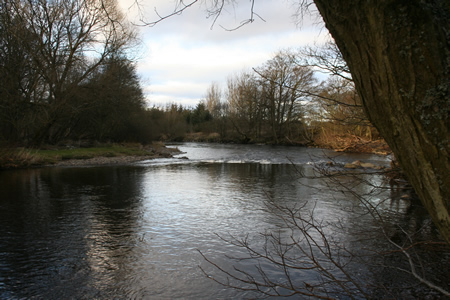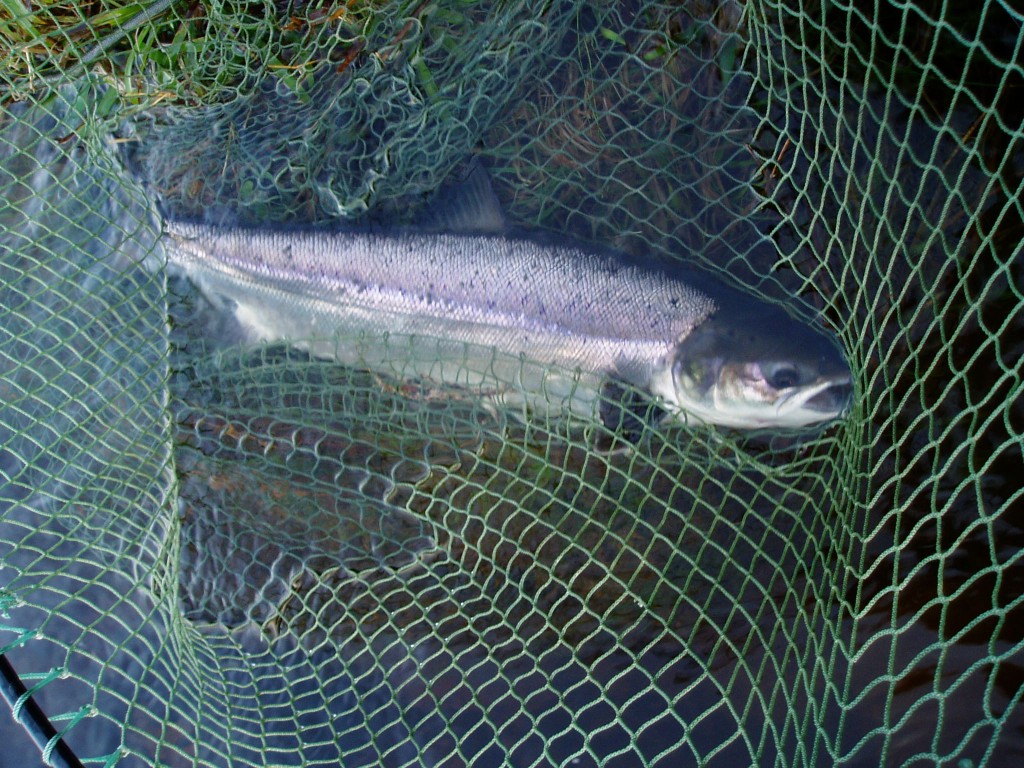These bulletin blogs represent news about Finavon and the South Esk, and my views as a riparian owner. They are not the views of any other organisation, nor are they designed to promote the interests of any individual or organisation other than Finavon Castle Water and factors affecting the fishery. Tony Andrews
The last time we had a February springer at Finavon was in 2007. They are a rare occurrence because their presence in the middle river depends on an extended period of warm water, by which I mean above 40 F (or about 8C). February in the Angus Hills is often the coldest part of the winter, and that means that water temperatures are generally low and, more often than not, the river frost-bound or running full of grue. Combined with relatively warm water (warmer than the sea is best), a good flow also helps; anything above 1’0″ at Gella Bridge is ideal. On the Finavon webcam that level is shown when the ‘armchair rock’ in the centre of the picture holds back a bulge of water, with the face of the boulder wet from water slopping over it. At that water height fish will be encouraged to move through the system.
This is the junction of Frank’s Stream with the head of Indies Pool on Indies Beat. It is one of the ‘hot spots’ for salmon and sea trout at Finavon. Indies is a deep holding pool and Frank’s Stream is a streamy run over gravel and cobble, ideal for holding fish in a good water. Both pools always score well in the FCW catch statistics.
2012 has been a good year for well mended kelts. The FCW ghillie, Moray Macfarlane, has had fifteen to his own rod, mainly from Milton Beat. That was also where he caught a well shaped 7lbs spring fish, with a couple of sea lice attached to verify its recent arrival from salt water. The salmon came from the lower section of the Willows, which is a top spring pool, along with Tyndals, Indies and Melgund.
Stop Press. The Usan nets monitoring catches in February were 11 salmon with an average length of about 36″. The early ones were 3SW fish (that’s interesting in itself) and the later ones were 2SW. At the time I spoke with the Montrose team there were no instances in any of the neighbouring rivers or the South Esk of receivers picking up signals from released fish.
TA 5/3/2012

